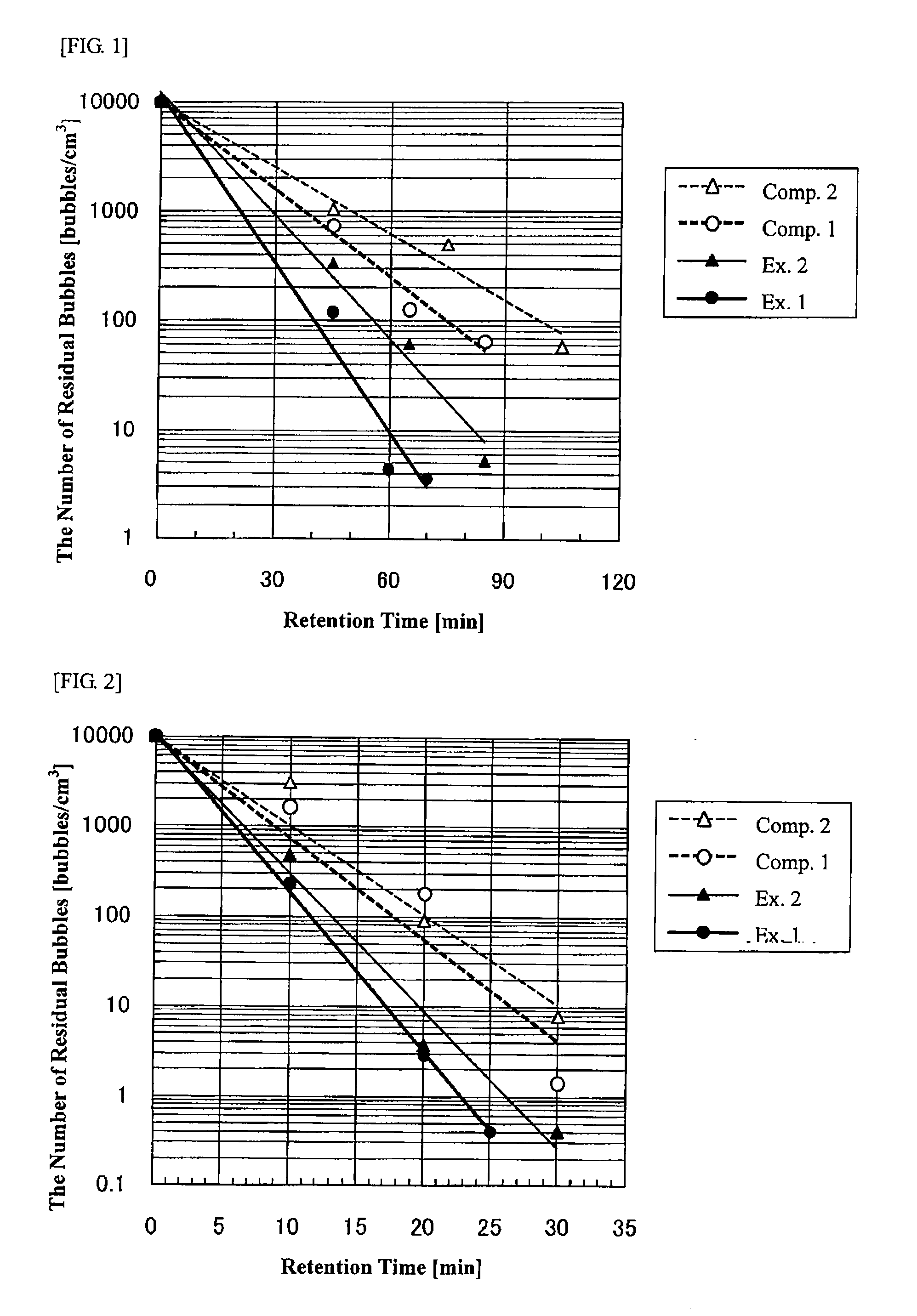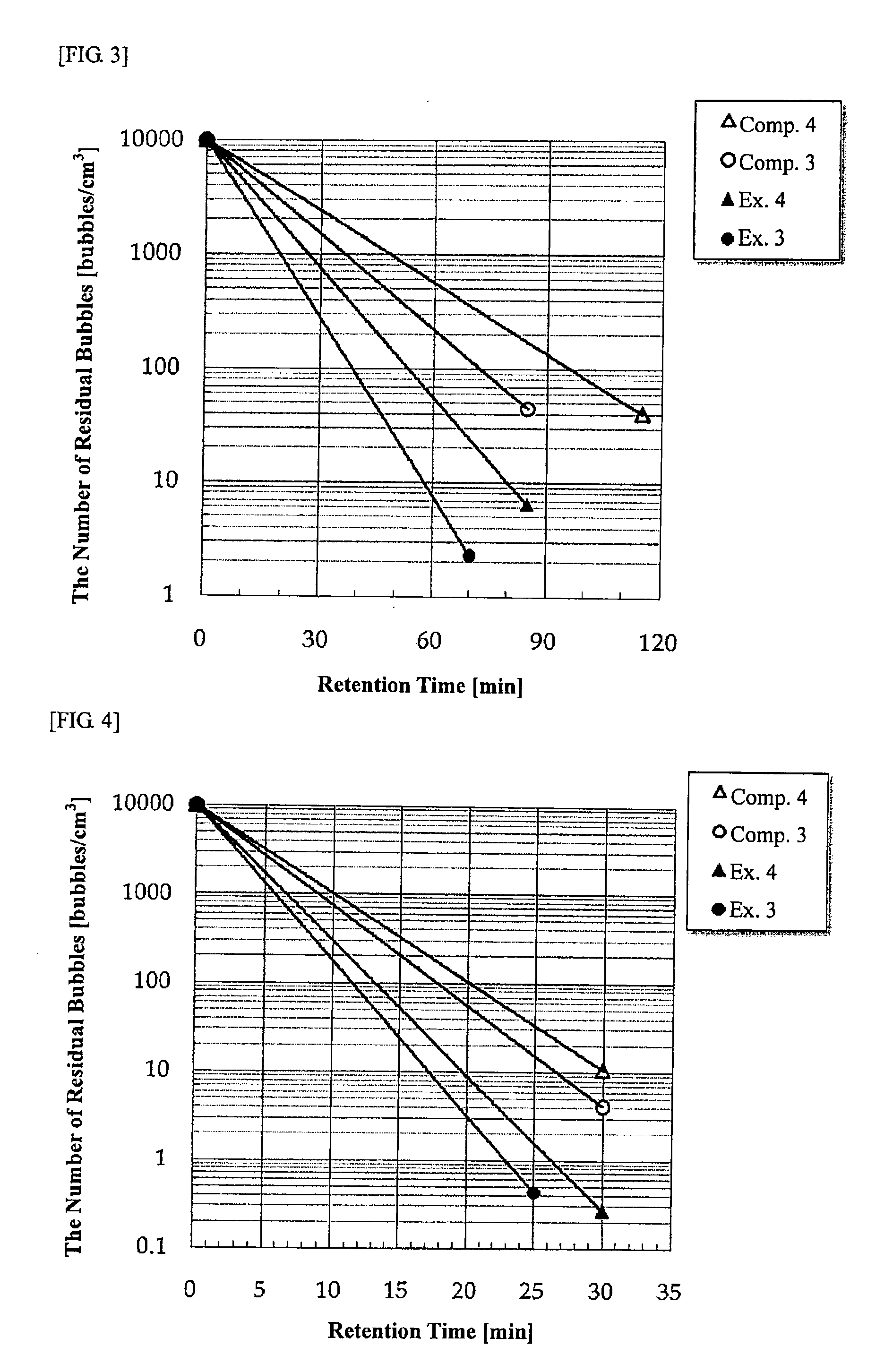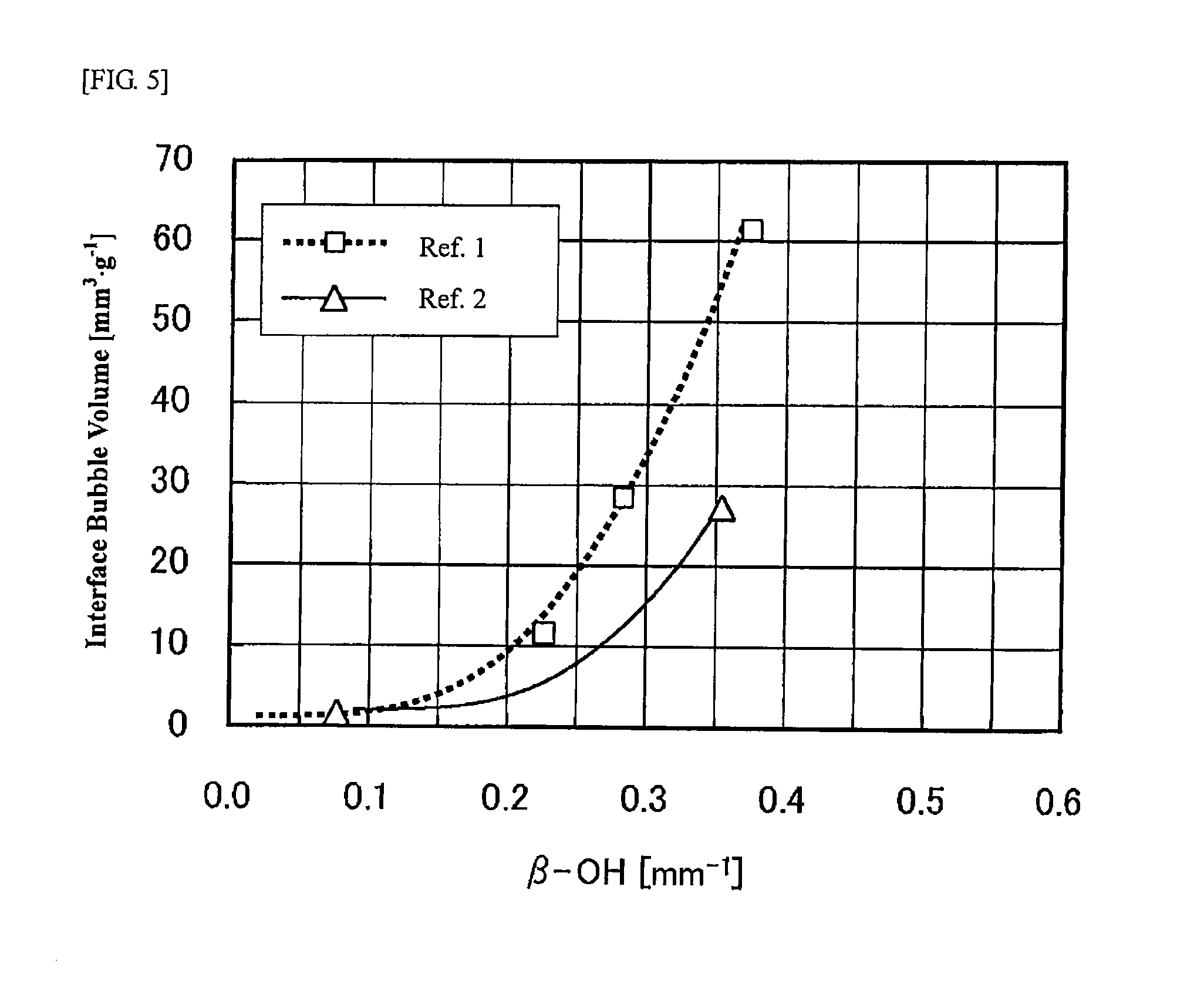Non-alkali glass and method for producing same
a non-alkali glass and non-alkali technology, applied in the field of non-alkali glass, can solve the problems of deterioration of film characteristics, weakened bhf resistance, and a tendency to decrease the strain point of 3/sub>, and achieve the effect of high strain point and easy float-forming glass
- Summary
- Abstract
- Description
- Claims
- Application Information
AI Technical Summary
Benefits of technology
Problems solved by technology
Method used
Image
Examples
examples 5 to 8
[0141]Raw materials of respective components were mixed so as to obtain the target composition shown in Table 2, melted in a continuous melting furnace, and formed into a sheet shape by a float process. In melting, stirring was performed by using a platinum stirrer to homogenize a glass. Table 2 shows the glass compositions (unit: % by mass, provided that the SO3 content is in ppm) and the β-OH value of the glass (measured as an indication of the water content in the glass by the above-mentioned procedure, unit: mm−1). As the particle size of silica sand in the raw materials used at this time, the median particle size D50, the ratio of particles having a particle size of 2 μm or less and the ratio of particles having a particle size of 100 μm or more are also shown together in Table 2. Further, the mass ratio (in terms of MO) of hydroxide raw materials in alkali earth metals is also shown together in Table 2.
TABLE 2Ex. 5Ex. 6Ex. 7Ex. 8SiO260.960.860.860.9Al2O320.520.420.320.1B2O30.9...
reference examples 1 and 2
[0143]Raw materials of respective components were mixed so as to obtain the target composition shown in Table 3, and melted at a temperature of the temperature T2 (the temperature at which the viscosity becomes log η=2.0 [dPa·s]) for 4 hours by using a platinum crucible. In melting, stirring was performed by using a platinum stirrer to homogenize a glass, and reduced-pressure defoaming was further performed to obtain a homogeneous bubble-free glass.
[0144]Twenty grams of the resulting glass was cut out, and heat-treated at a temperature of the temperature T3 (the temperature at which the viscosity becomes log η=3.0 [dPa·s]) for 1 minute by using a platinum dish to obtain a state where an interface between the glass and the platinum dish had no bubbles. After the platinum dish was taken out form the electric furnace and cooled, the mass and the specific gravity were measured as the glass was attached to the platinum dish to determine the volume.
[0145]Then, the platinum dish was placed...
reference examples 3 and 4
[0148]A sample obtained by mixing raw materials of respective components so as to obtain the target composition shown in Table 4 was placed in an amount of 800 g in a platinum crucible, melted and defoamed under reduced pressure. A stirrer was immersed therein, and one where the sample was allowed to stand for 30 minutes, and meanwhile, another one where the sample was stirred for 30 minutes were prepared. Thereafter, the glass was allowed to flow out and the bubble number was measured. The bubble number a of the glass that was only allowed to stand and not stirred and the bubble number β of the glass that was stirred were evaluated to determine the increment β−α in bubbles between with and without stirring.
[0149]As a result, as shown in Table 4, the glass of Reference Example 3 had an increment in bubbles of 1.7 bubbles / g, whereas the glass of Reference Example 4 had an increment in bubbles of 160.9 bubbles / g. From these results, it has been confirmed that in Reference Example 4 co...
PUM
| Property | Measurement | Unit |
|---|---|---|
| viscosity | aaaaa | aaaaa |
| viscosity | aaaaa | aaaaa |
| strain point | aaaaa | aaaaa |
Abstract
Description
Claims
Application Information
 Login to View More
Login to View More - R&D
- Intellectual Property
- Life Sciences
- Materials
- Tech Scout
- Unparalleled Data Quality
- Higher Quality Content
- 60% Fewer Hallucinations
Browse by: Latest US Patents, China's latest patents, Technical Efficacy Thesaurus, Application Domain, Technology Topic, Popular Technical Reports.
© 2025 PatSnap. All rights reserved.Legal|Privacy policy|Modern Slavery Act Transparency Statement|Sitemap|About US| Contact US: help@patsnap.com



